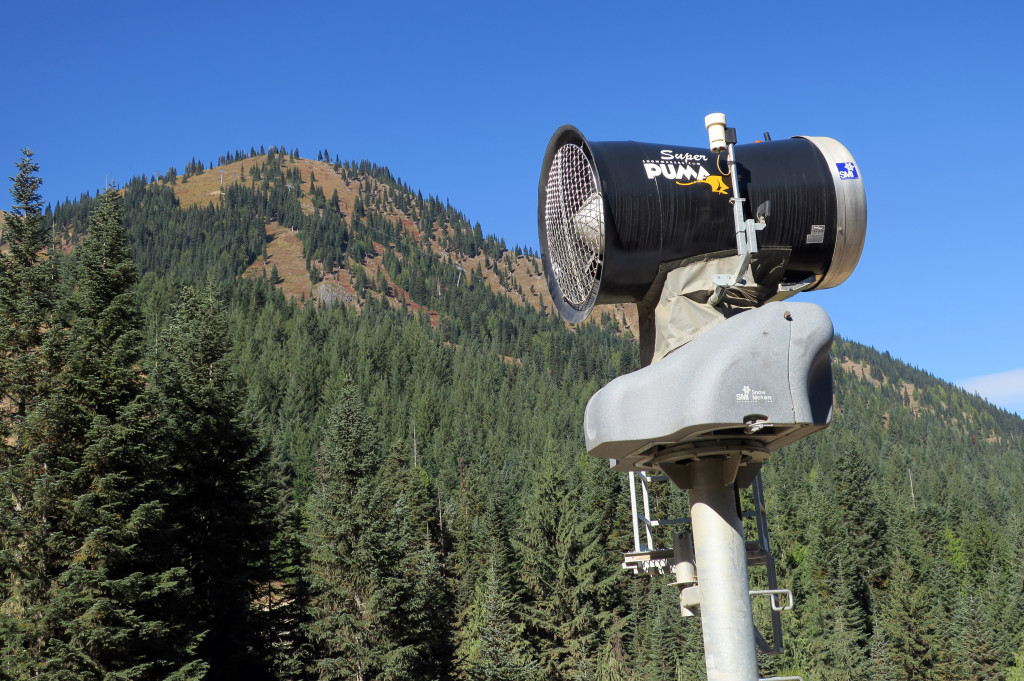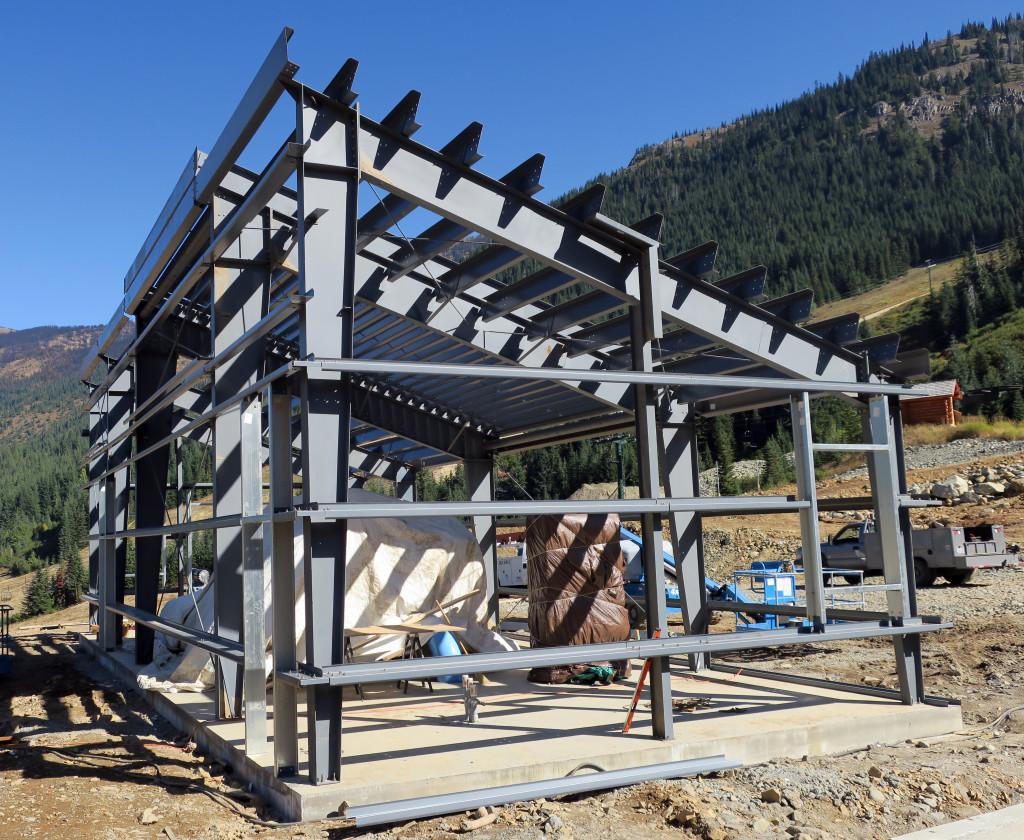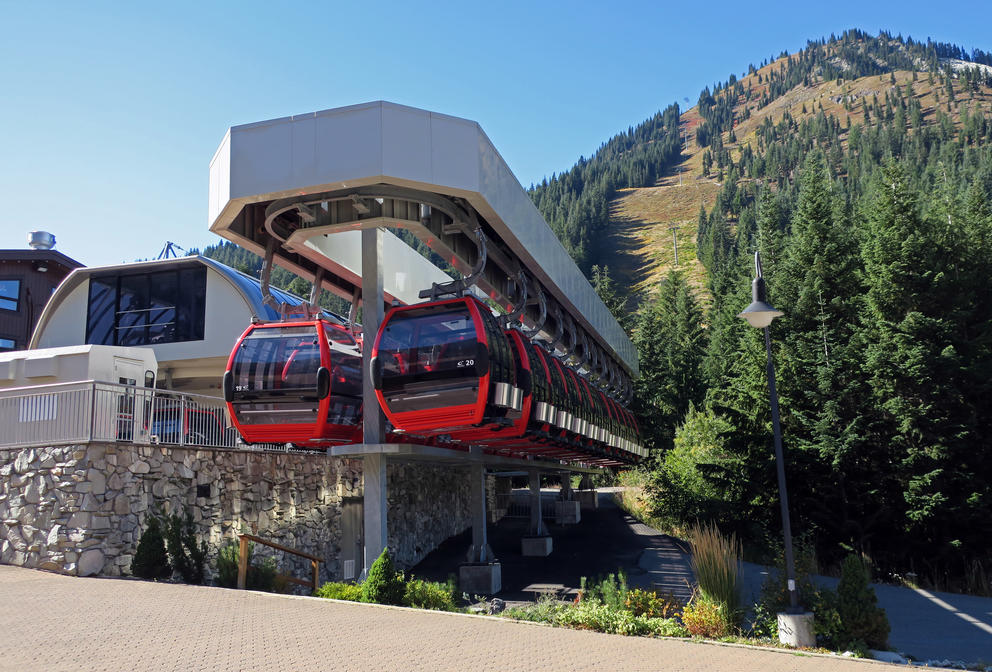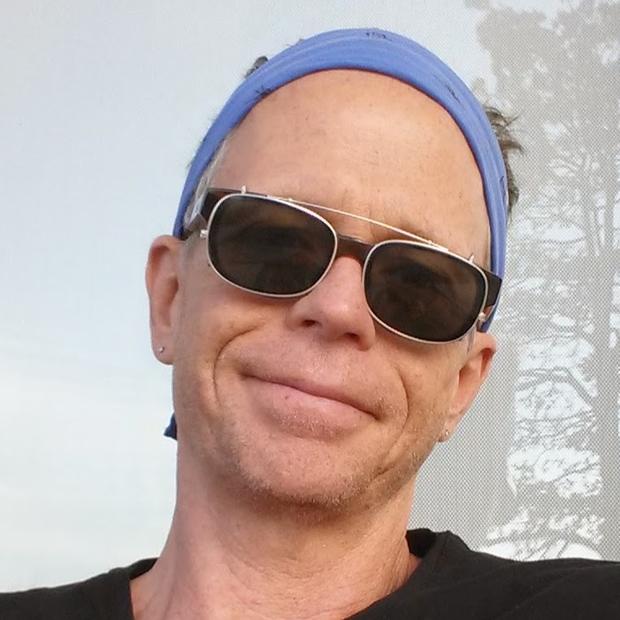This winter, skiers and snowboarders will see something new at Crystal Mountain — a robust $5 million snowmaking system designed to fight warmer winters in the Pacific Northwest.
Crystal’s state-of-the-art program features 36 new snow guns on the lower mountain that have the capacity to create up to 53 football fields covered in snow in a 24-hour period.
Is this the new normal for ski areas in the historically snow-rich Cascades?
Until recent years, Washington ski resorts haven’t needed to worry about making snow. But snow seasons have gotten shorter, snow levels are rising and climate projections call for radically warmer winters in the future.
In the disastrous 2014-15 ski season, the region got a glimpse of what that future may hold. Warm temperatures caused much of the winter precipitation to fall as rain instead of snow. With a radically reduced snowpack, many resorts closed in February, and the state experienced a drought the following summer.
To battle the changing climate, several resorts now have fairly large snowmaking operations, and those that don’t are thinking about getting in the human-made snow game themselves.
“As we all know, things are warming up,” said John Kircher, owner and manager of Crystal Mountain. “Now we’ll have a little fallback.”
Under a best-case scenario, Crystal Mountain will stockpile snow made during cold weather and push it around to create a base on its lower slopes in the early season, then hope that Mother Nature takes over with natural snow, Kircher said. But if the snow doesn’t arrive, the ski area now has an insurance policy to keep its slopes covered and chairlifts open, he said.
“In the Northwest, it is an essential part of going forward” in the ski resort business, he said.
Topping out at 7,000 feet, Crystal’s upper mountain usually receives ample snowfall, but the lower slopes, bottoming out at 4,500 feet, can have difficulty holding snow, particularly early in the season, Kircher said. During lean snow years such as the 2014-15 season, the resort opened its upper mountain, while the lower-elevation beginner-friendly slopes were closed with no coverage at all.
With lower slopes bare, the resort had to cancel ski school programs and families canceled vacations.
“What (the new system) does is to not force us to close like we’ve had to do a couple of times in the past,” Kircher said.
Crystal may not be done adding to its snowmaking arsenal. In the future, the resort may add snowmaking machines to locations on the upper mountain to keep some of its most popular runs covered, Kircher said.
“In thinner years, snow conditions would really benefit from a couple of snow guns in high-traffic areas,” he said.
John Gifford, president of the Pacific Northwest Ski Areas Association, said Crystal’s snowmaking expansion is a significant step among Cascade ski areas.
“I don’t see other resorts going in as big as they are,” he said.

Mission Ridge near Wenatchee was the first ski area to embrace snowmaking in the Washington Cascades. The resort began making snow in 1976 and ramped up operations 15 years ago into a major program that “gave us snowmaking from the top of the mountain to the bottom,” said Tony Hickok, Mission's marketing manager.
The reason Mission got into the snowmaking game first was geographic. The resort is located on the eastern slope of the Cascades and often receives less snow than its west-side counterparts. The ski area also receives drier snow, so having a system to build a base is essential, Hickok said.
“We’ve been doing it better and longer than anyone else,” he said. Now, the resort even has a “Countdown to Snowmaking” clock on its homepage signaling the unofficial start to ski season.
The proof that snowmaking is essential going forward occurred in that 2014-15 season, when most resorts had to close. Meanwhile, Mission’s human-made snowpack allowed it to stay open, Hickock said.
“Two years ago, Mission Ridge was the only ski area open every weekend of the season,” Hickok said.
Another ski area that has used snowmaking effectively is White Pass, on U.S. Highway 12, the southern-most cross-mountain route in the Washington Cascades. In 2014-15, snowmaking “was a life-saver,” said Kevin McCarthy, general manager of White Pass.
Like Crystal plans to do, White Pass uses its snowmaking primarily on the lower mountain.
“It’s about connecting the base area with the upper two-thirds of the mountain” where enough snow falls, McCarthy said. “Snowmaking in the early season really does make life easier for us. Some years it’s critical.”
Other parts of North America have embraced human-made snow for years, McCarthy said, and in time he predicts it will become more prevalent in the Northwest.
“The Northwest is the last bastion of purely natural snow-skiing,” he said. “First snow-making came to the East Coast, then it was the Rocky Mountain resorts.
“It’s something that every ski area in the Northwest is now looking at,” McCarthy said.

Even Stevens Pass along snowy U.S. Highway 2 has “a couple of guns to help fill in during the early season,” said Chris Danforth, vice president for sales and marketing at the resort. But at the moment, Stevens has no plans to expand snowmaking beyond that, he added.
Summit at Snoqualmie, with the lowest-elevation slopes in the Cascades, has a “very modest operation” with five guns, said Guy Lawrence, resort marketing director.
The four ski areas in the Summit at Snoqualmie family along the Interstate 90 corridor — Summit East, Summit Central, Summit West and Alpental — are most at risk during bad snow years because of their relatively low base elevations near the 3,000-foot level. But Summit at Snoqualmie holds no water rights, Lawrence said, which means the resort must buy water for snowmaking from the utility district, something that’s cost-prohibitive.
“Until we can figure out the water access, we can’t really expand much,” he said.
The only resort in the Washington Cascades without any snowmaking is Mt. Baker Ski Area near the Canadian border on State Route 542. Through the luck of location — in the North Cascades where Pacific storms converge and dump after rising over 10,781-foot Mount Baker — the resort receives an average of 641 inches annually, the most of any ski area in the world.
“We happen to be in the sweet spot,” said Amy Trowbridge, Mt. Baker marketing director. Snowmaking is expensive, she said, and “the incredible financial outlay at this point would not be worth it.”
Will Mt. Baker’s snow luck continue in the future? Climate projections for Washington ski resorts aren’t encouraging.
“Every single scenario shows significant warming,” said Amy Snover, director of the climate impacts group at the University of Washington’s College of the Environment. “When you have the warming that is projected, you will see significant snow loss.”
The snowpack in the Northwest could shrink 40 to 70 percent by 2050, according to a National Resources Defense Council report.
In UW studies, the average length of snow seasons will decrease by up to 46 percent by the 2040s compared to historical averages, Snover said.
“If you go out to the 2080s, you will see a loss of 56 to 70 percent” in snow-season length, she said. It’s important to note, Snover said, that studies predict averages, and that occasionally there will be big snow years, but the average length of the snow season will continue to decline.
The disastrous 2014-15 season “is likely what we can expect for the future,” Snover said. “It was warm. The precipitation fell as rain.”
A previous version of this article mislabeled a source as a Rutgers study. The correct source was the National Resources Defense Council.



